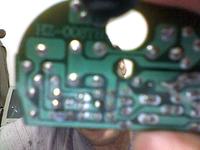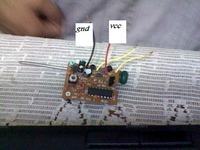mamech
Full Member level 3
Hello Everyone
I am not sure that I am posting in the right place, but here is my question:
I have an RF transmitter and an RF receiver which I got them from old cheap kids toy, I thought that I can use them to connect tx of a micro to rx of another one wireless. I have a very limited knowledge about RF and wireless circuits, but I was having some doubts that both of RF transmitter and the receiver are not designed for the purpose I want. When I gave it a try, nothing worked as I supposed. I was working on baudrate of 9600, but I thought that if I lowered the baudrate greatly, this could solve the problem. I reached with the baudrate even to 19, but nothing worked !! When the micro starts to send by tx, the RF receiver goes high and I read voltage on its output (which means it does receive the signal), but the micro does not understand it. I tried to put a 33pf capacitor parallel with rx receiver to filter the signal, but nothing worked.
I know that may be the manufacturing company of the toy made some sort of low pass filters, so only low frequencies pass, but I think baud rate of 19 is already a very low one.
Can anyone help me????
I am not sure that I am posting in the right place, but here is my question:
I have an RF transmitter and an RF receiver which I got them from old cheap kids toy, I thought that I can use them to connect tx of a micro to rx of another one wireless. I have a very limited knowledge about RF and wireless circuits, but I was having some doubts that both of RF transmitter and the receiver are not designed for the purpose I want. When I gave it a try, nothing worked as I supposed. I was working on baudrate of 9600, but I thought that if I lowered the baudrate greatly, this could solve the problem. I reached with the baudrate even to 19, but nothing worked !! When the micro starts to send by tx, the RF receiver goes high and I read voltage on its output (which means it does receive the signal), but the micro does not understand it. I tried to put a 33pf capacitor parallel with rx receiver to filter the signal, but nothing worked.
I know that may be the manufacturing company of the toy made some sort of low pass filters, so only low frequencies pass, but I think baud rate of 19 is already a very low one.
Can anyone help me????




